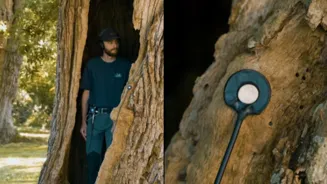A rare guitar has sparked a dispute between former Rolling Stones guitarist Mick Taylor and New York’s Metropolitan Museum of Art. The instrument in question, a 1959 Gibson Les Paul, was recently donated
to the museum by billionaire collector Dirk Ziff, as part of a collection of over 500 vintage American guitars.
However, Taylor claims the guitar was stolen from him decades ago. He says he last saw it in 1971 at a villa in southern France, where the Rolling Stones were staying at the time. According to Taylor, several of the band’s belongings mysteriously disappeared during their stay, and he believes this guitar may have been among the missing items.
Now, Taylor and his partner, business manager Marlies Damming, believe the long-lost guitar has resurfaced. As per Associated Press, the pair is now asking the museum to make the guitar “available for inspection” so they can take a closer look and confirm its identity.
Speaking with the portal, Damming said, “An independent guitar expert should be able to ascertain the guitar’s provenance one way or the other.”
However, following Mick Taylor and Marlies Damming’s claims, the Metropolitan Museum of Art responded, saying that there is no proof the guitar ever belonged to a Rolling Stones member. A museum spokesperson, Ann Bailis, said, “This guitar has a long and well-documented history of ownership.” According to the Met, the provenance records, which track the guitar’s past owners, do not show Taylor’s name at any point.
Met’s spokesperson further mentioned that the 1959 Les Paul guitar was owned by Keith Richards until 1971. After that, it was reportedly acquired by record producer and manager Adrian Miller, who kept it until his death in 2006.
Jeff Allen, who worked closely with Mick Taylor as his manager and publicist since the 1990s, shared what Taylor had once told him. Taylor said the guitar was a gift from Keith Richards. He also spoke about how the guitar went missing. According to Allen, Taylor used that same guitar to record the famous song Can’t You Hear Me Knocking, which became one of his most well-known performances.















